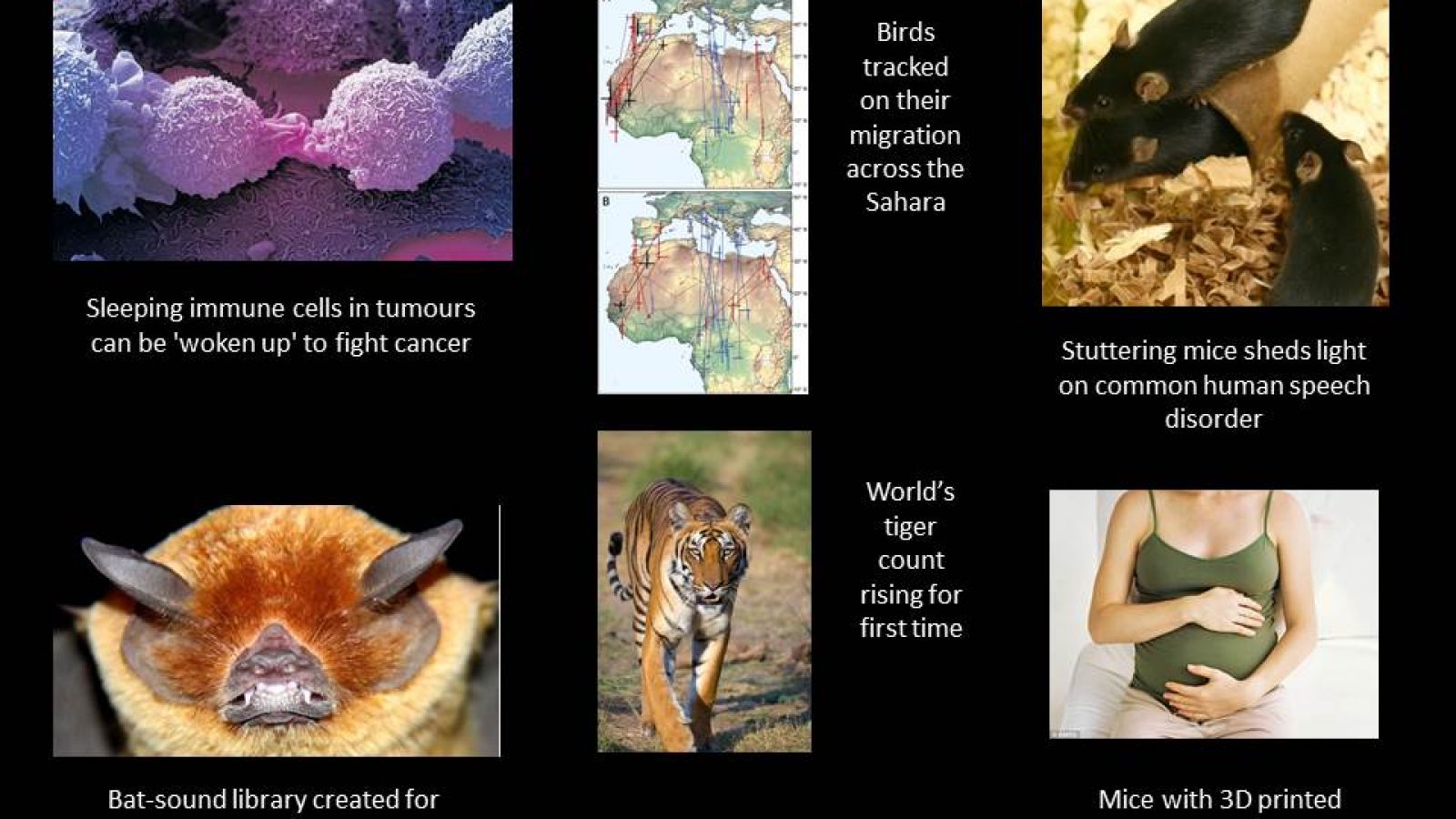Sleeping immune cells in tumours can be 'woken up' to fight cancer
Scientists at Cancer Research UK and University College London have proven it is possible to use genetic editing to snip away the ‘off switch’ so that the immune system recognises cancer again.
Researchers say it is like ‘cutting the brakes’ and allowing immune cells to do the rest.
The treatment would work by taking a biopsy of a tumour and then identify immune cells that are already inside. Those cells are likely to me most effective as the fact that they are in the tumour suggests they were trying to attack it before they got switched off.
Scientists then use a genetic editing technique called TALEN to remove the ‘off switch’. The edited immune cells are then multiplied in a lab and replaced back in the body.
Stuttering mouse experiment sheds light on common human speech disorder
Genetic mutation given to squeaky rodents found halting patterns in early life squeaks, investigating causes of the human stammer
• Mutations in the lysosomal enzyme-targeting pathway cause stuttering in humans
• Mice with a mutation in this pathway also show abnormalities in vocalizations
• Other behaviors in the knockin mice appear largely intact
• People who stutter with this type of mutation have similar features in their speech
Each year more than two billion songbirds cross the Sahara
Using geolocation tracks from 27 pied flycatchers, a nocturnally migrating passerine, scientists showed that most birds made diurnal flights in both autumn and spring. These diurnal flights were estimated to be part of non-stop flights of mostly 40–60 h. In spring, birds flew across the Sahara, while autumn migration probably circumpassed part of the desert, through a long oversea flight.
Findings here: http://rsbl.royalsocietypublishing.org/content/12/4/20151060
http://www.bbc.co.uk/news/science-environment-35958741
Mice with 3D printed ovaries have delivered healthy babies and had normal hormone cycles. The scientists at Northwestern made a ovary scaffold by 3D printing using gelatin - similar to the keratin found naturally in our bodies - before implanting the necessary cells needed to grow eggs. The next step will involve studies in pigs before human trials can be realised.
"Earlier this year, U.S. researchers managed to print ear, bone and muscle structures made from live cells that survived for months inside rodents - scans showed new tissue and blood vessels had formed around them."
http://www.dailymail.co.uk/…/Now-3D-printers-build-new-ovar…
Tiger numbers up
The number of tigers has risen by around 20% over the past five years, from 3,200 in 2010, to 3,890 in 2016, according to the WWF. However some experts warn that this may be a result of improved data gathering. However, not all the news is good - the the tiger is officially extinct in Cambodia.
Ginette Hemley, senior vice president of wildlife conservation at WWF, said:
"More important than the absolute numbers is the trend, and we're seeing the trend going in the right direction,"
Last edited: 9 March 2022 13:03




